A block of mass 1kg is kept on the tilted floor of a lift moving down with 3ms−1. If the block is released from rest as shown, what will be the time taken by block to reach the bottom? What is the normal reaction on the block during the motion?
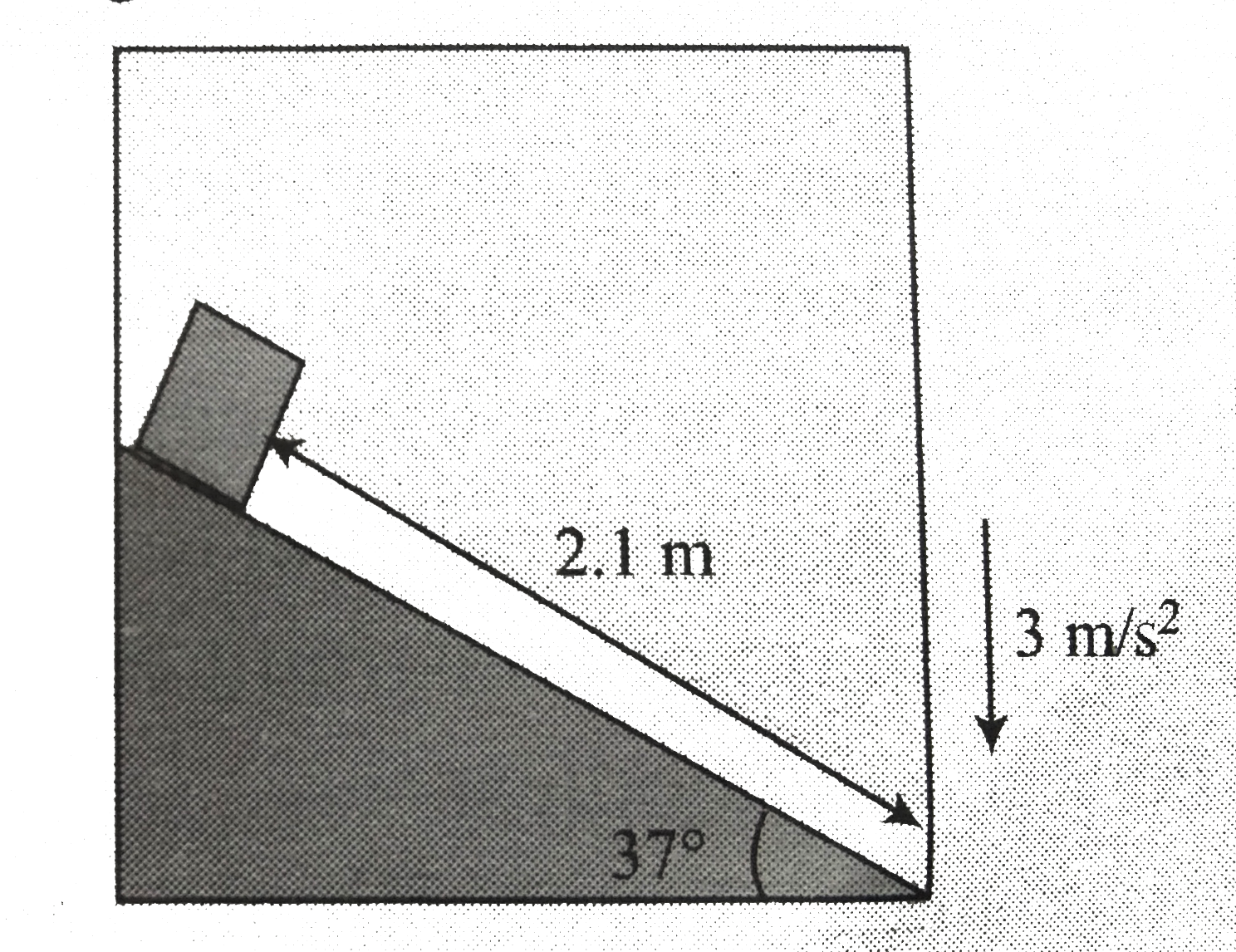
Normal to inclined the object is at rest
N=mgcos37∘−macos37∘
=m(g−a)⋅cos37∘
=1×7×45=285N
mgsin37∘−masin37∘=marel
arel=(g−a)sin37∘
=(10−3)×35=215ms−2
srel=urelt+12arelt2⇒2.1=0+12(215)t2⇒t=1.

Topper's Solved these Questions
- NEWTON'S LAWS OF MOTION 1Book:CENGAGE PHYSICSChapter:NEWTON'S LAWS OF MOTION 1Exercise:Exercise 6.3
Explore 19 Videos
- NEWTON'S LAWS OF MOTION 1Book:CENGAGE PHYSICSChapter:NEWTON'S LAWS OF MOTION 1Exercise:Exercise 6.4
Explore 13 Videos
- NEWTON'S LAWS OF MOTION 1Book:CENGAGE PHYSICSChapter:NEWTON'S LAWS OF MOTION 1Exercise:Exercise 6.1
Explore 11 Videos
- MISCELLANEOUS VOLUME 2Book:CENGAGE PHYSICSChapter:MISCELLANEOUS VOLUME 2Exercise:INTEGER_TYPE
Explore 10 Videos
- NEWTON'S LAWS OF MOTION 2Book:CENGAGE PHYSICSChapter:NEWTON'S LAWS OF MOTION 2Exercise:Integer type
Explore 1 Video
Similar Questions
A block of mass 1 kg is kept on the tilted floor ofa lift moving, down with 3m/s2. If the block is released from rest as shown, what will be the time taken by block to reach the bottom. What is the normal reaction on the block during the motion?
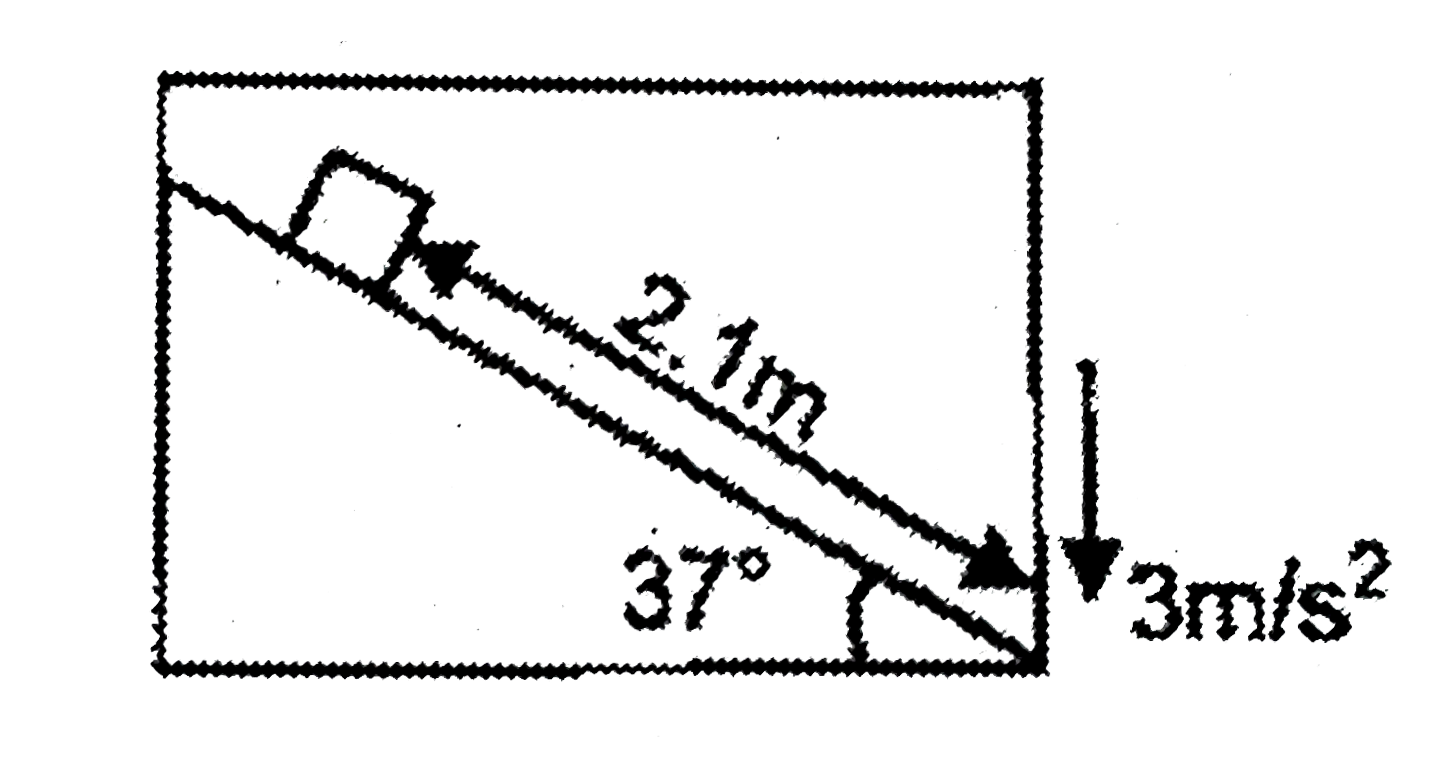
View SolutionIf the system is left from rest find the time taken by the 8kg block to reach the ground.
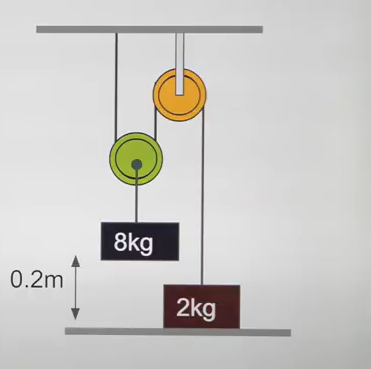
View Solution
Knowledge Check
A block of mass m is kept on an inclined plane of a lift moving down with acceleration of 2ms−1.What should be the coefficient of friction to let the block move down with constant velocity relative to lift.
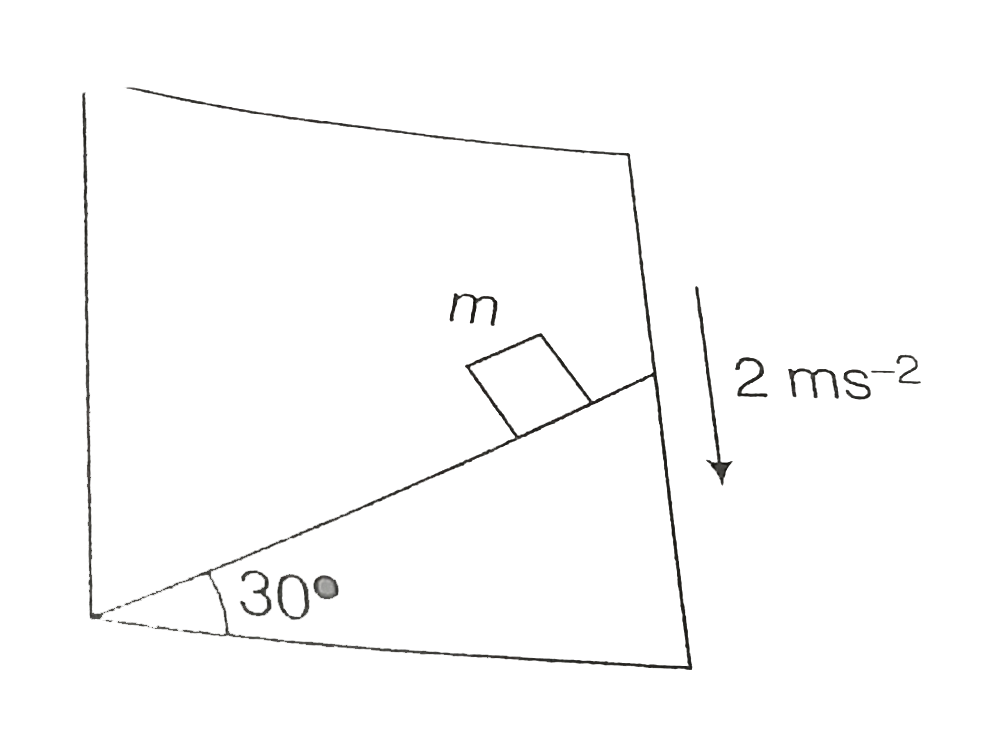 Aμ=1√3Bμ=0.4Cμ=0.8Dμ=√32
Aμ=1√3Bμ=0.4Cμ=0.8Dμ=√32A block of mass is kept on an inclined plane of a lift moving down with acceleration of 2ms−2 What should be the minimum coefficient of friction to let the block move down with constant velocity?
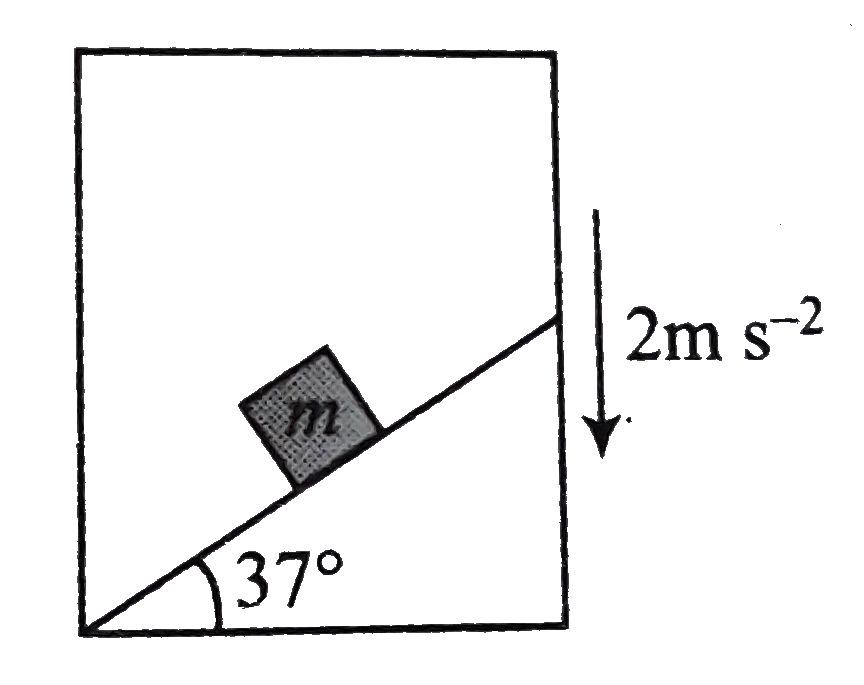 Aμ=1√3Bμ=0.4Cμ=0.8Dμ= not defined
Aμ=1√3Bμ=0.4Cμ=0.8Dμ= not definedA block of mass m is kept on an inclined plane of a lift moving down with acceleration of 2m/s2 . What should be the coefficient of friction for the block to move down with constant velocity relative relative to lift?
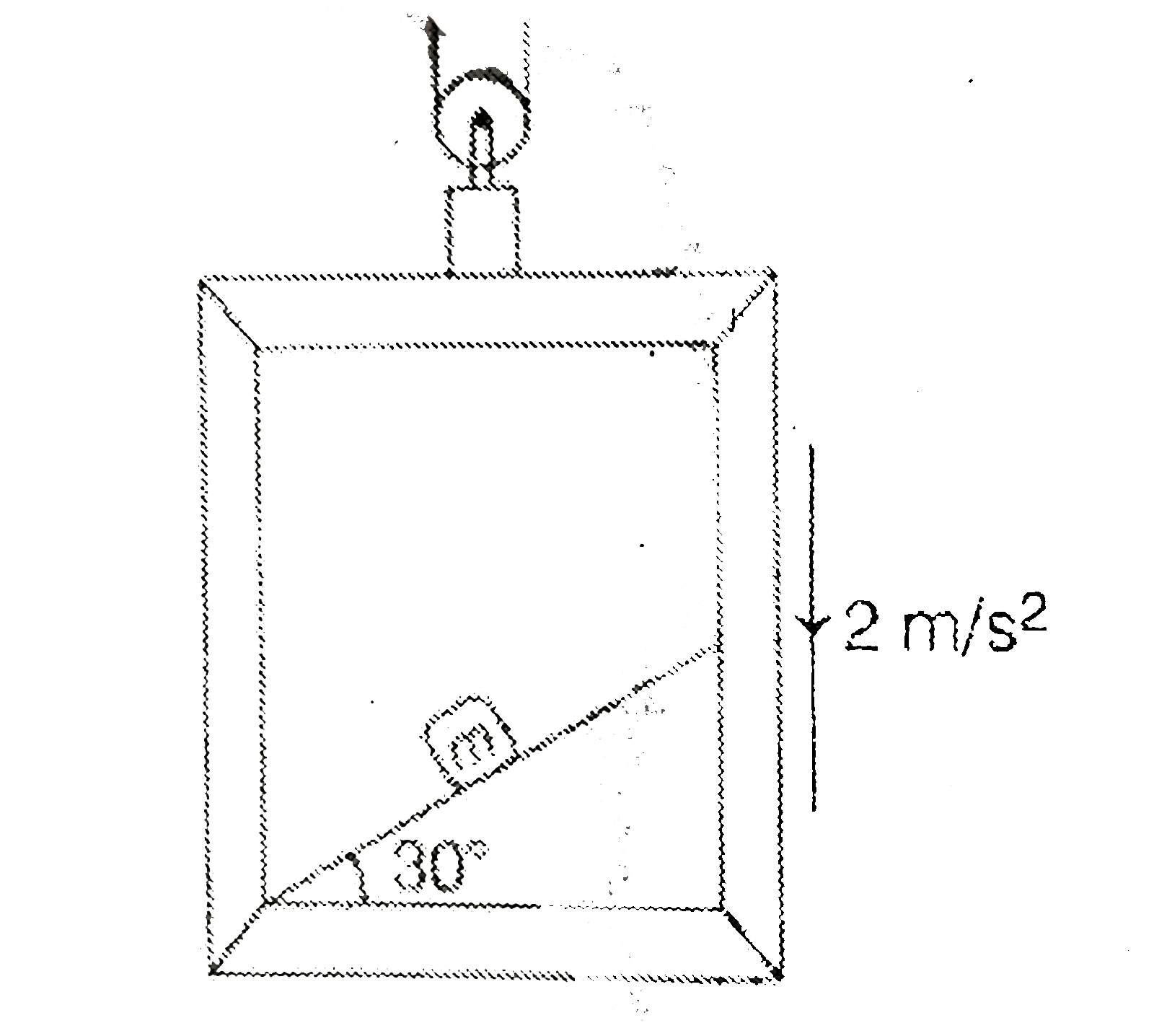 Aμ=1√3Bμ=0.4Cμ=0.8Dμ=0.5
Aμ=1√3Bμ=0.4Cμ=0.8Dμ=0.5
A block of mass m is released from a wedge of mass m as shown in figure . Find the time taken by the block to reach the end of the wedge.
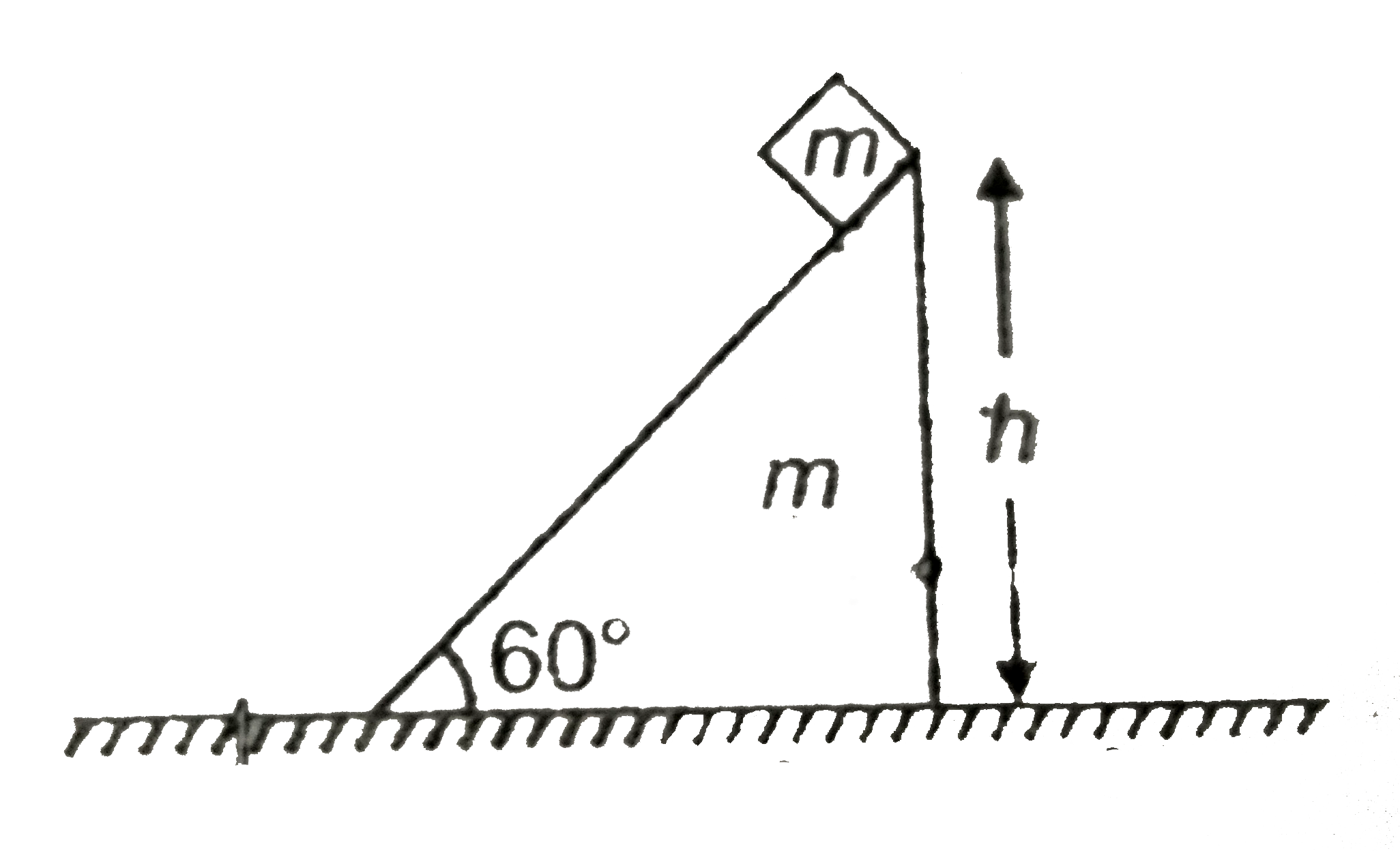
View SolutionBlock A has a mass of 5kg and is placed on top of a smooth triangular block, B having a mass of 30kg. If the system is released from rest, determine the distance, B moves when A reaches the bottom. Neglect the size of block A.
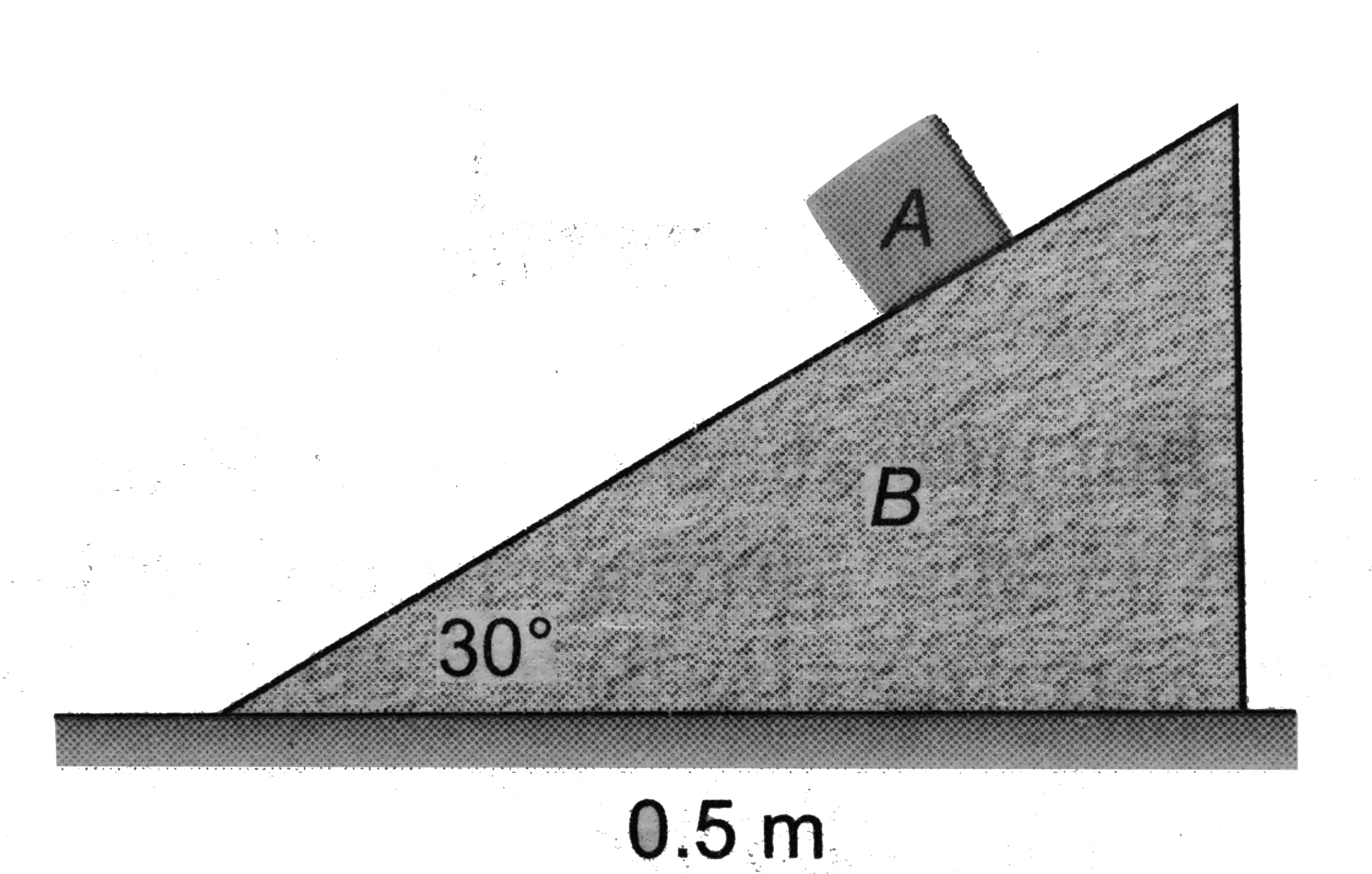
View SolutionA wooden block of mass 1 kg rests on a soft horizontal floor. When an iron cylinder of mass 20kg is placed on top of the block, the floor yields steadily and booth go down with an acceleration of 0.1ms−2. What is the action of the block on the floor (a) before and (b) after the floor yields? (Take g=10ms−2). Identify the action and reaction pairs in the problem.

View SolutionA block of mass m is placed on a rough floor of a lift . The coefficient of friction between the block and the floor is μ. When the lift falls freely, the block is pulled horizontally on the floor. What is the force of friction -
View SolutionA block of mass 2kg is kept on the floor. The coefficient of static friction is 0.4 . If a force F of 2.5N is applied on the block as shown in the figure, the frictional force between the block and the floor will be.

View Solution

